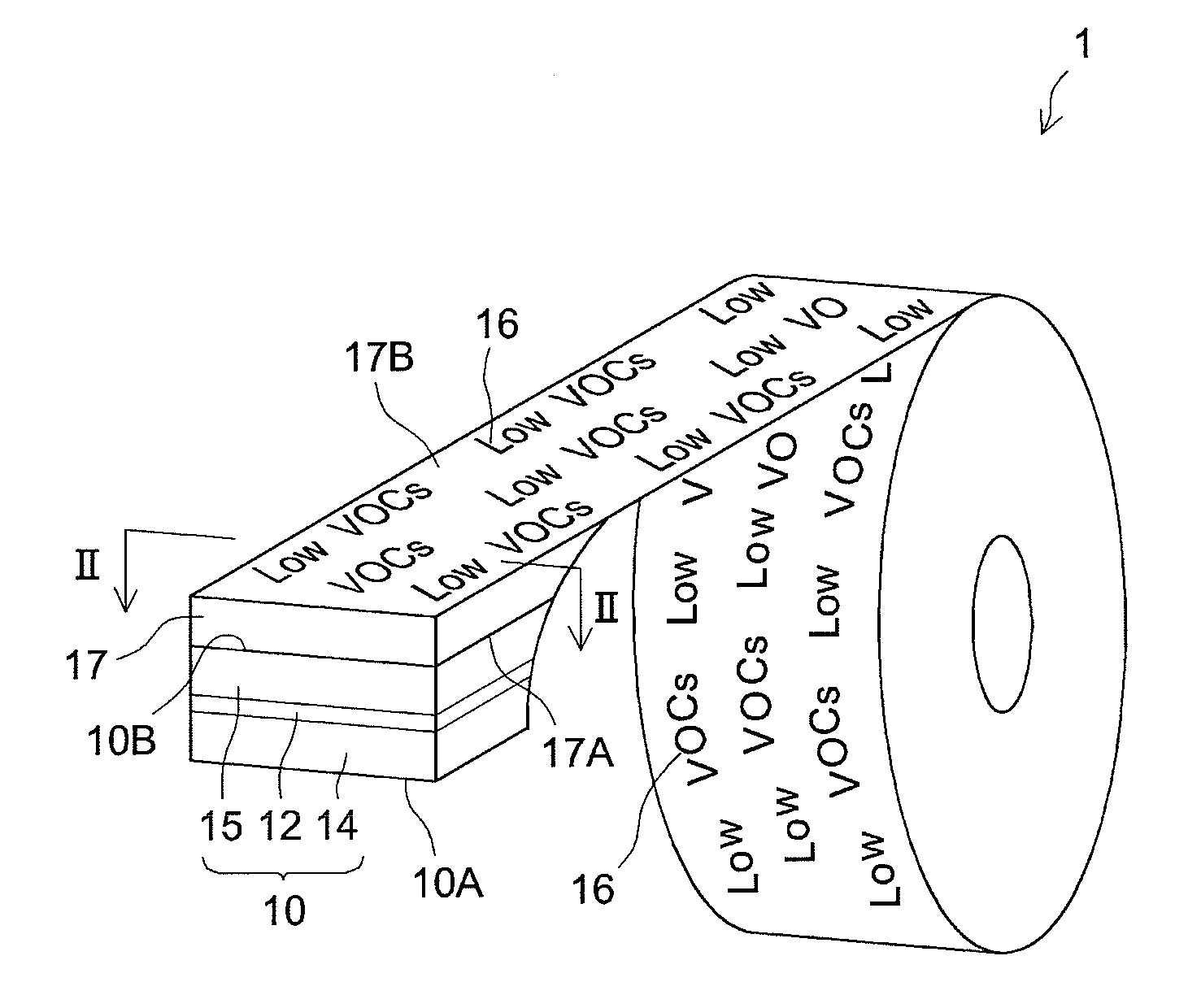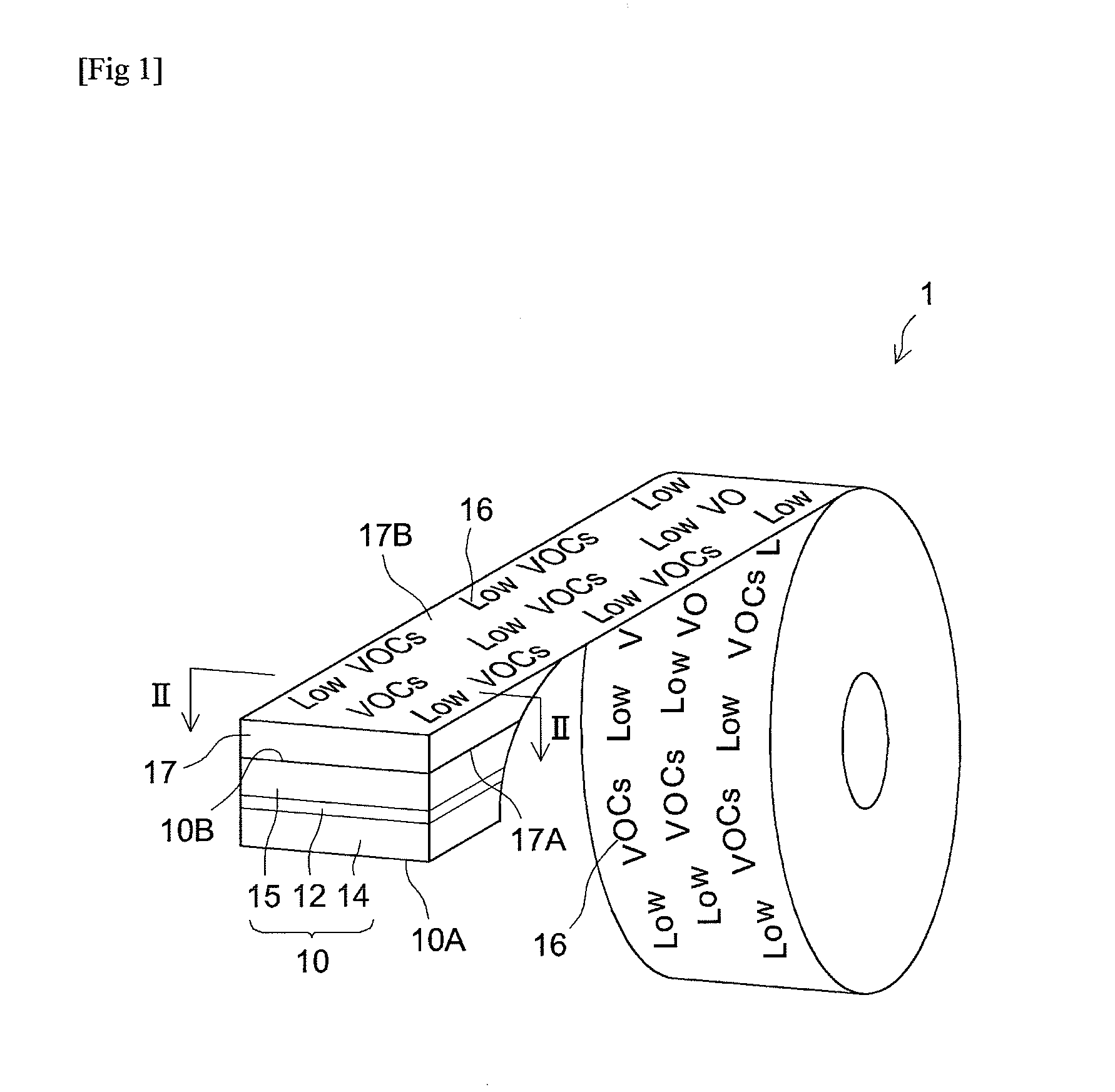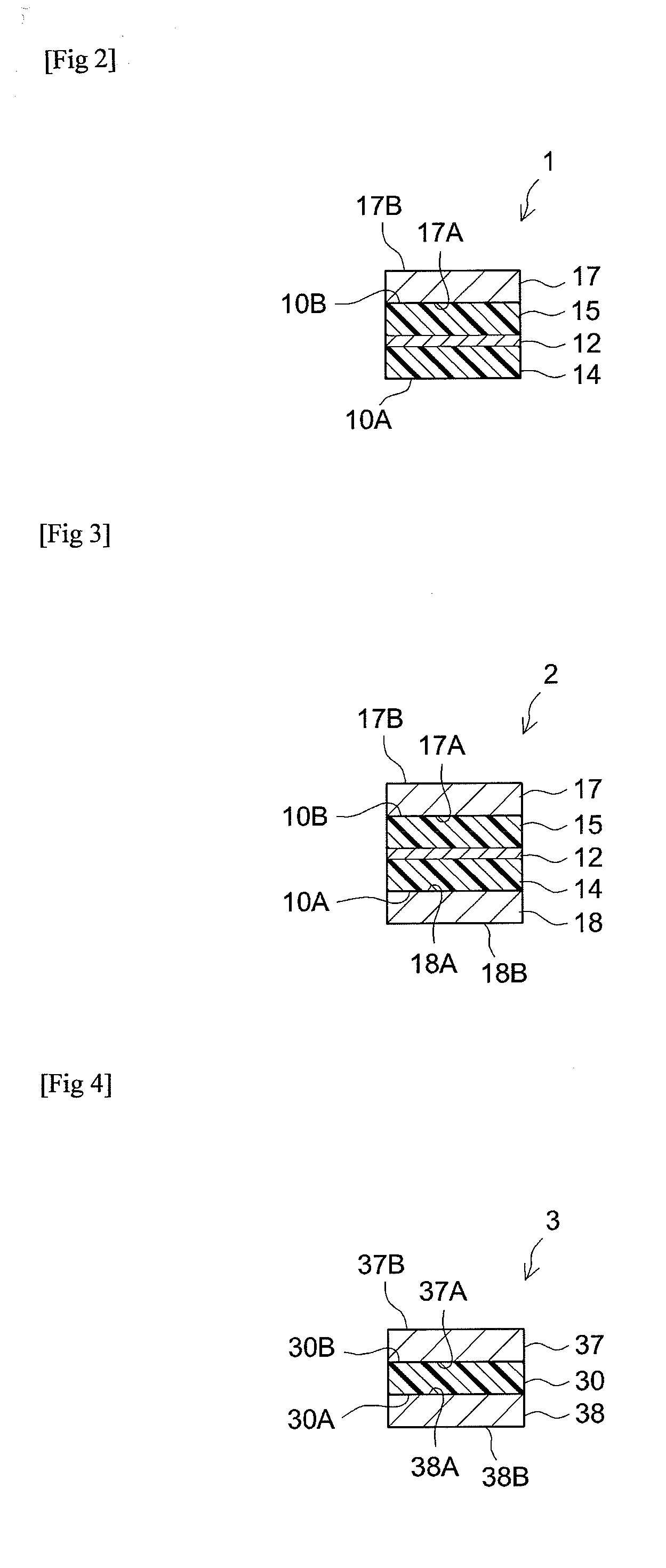Pressure-sensitive adhesive sheet
a technology of pressure-sensitive adhesives and adhesive sheets, which is applied in the direction of film/foil adhesives, layered products, transportation and packaging, etc., can solve the problems of low-voc psa sheets being mistaken, the description of packaging materials cannot be referred to at the time of psa sheets, and so as to reduce the emission of toluene and tvoc, superior adhesion, and superior adhesion
- Summary
- Abstract
- Description
- Claims
- Application Information
AI Technical Summary
Benefits of technology
Problems solved by technology
Method used
Image
Examples
example 1
[0145]70 parts of n-butyl acrylate (BA), 27 parts of 2-ethylhexyl acrylate (2-EHA), 3 parts of acrylic acid (AA), 0.1 parts of 2-hydroxyethyl acrylate and ethyl acetate were placed in a reaction vessel equipped with a condenser, nitrogen gas feed tube, thermometer and stirrer followed by introducing nitrogen gas while stirring gently to replace the inside of the vessel with nitrogen. This reaction liquid was heated to 70° C. followed by the addition of 0.2 parts of AIBN (polymerization initiator). A polymerization reaction was carried out for 8 hours while holding the system at 70° C. to obtain an ethyl acetate solution of an acrylic polymer having a weight average molecular weight of 70×104.
[0146]20 parts of an tackifier resin (Rika TAC, trade name: “RikaTAC PCJ”, polymerized rosin ester resin having a softening point of 128° C.) and 2 parts of a crosslinking agent (Nippon Polyurethane Industry, trade name: “Coronate L”, isocyanate-based crosslinking agent) were added to this solut...
example 2
[0149]A UV-curable, solvent-free silicone-based release agent was coated onto a PE layer of a substrate obtained in the same manner as Example 1 instead of the mixture of release agent and catalyst of Example 1. The amount of the release agent coated was 1.3 g / m2. After coating the release agent, the release agent was irradiated with ultraviolet light under conditions of luminance of 2 W / cm2 and a line speed of 70 m / min using a high-pressure mercury lamp for the light source to cure the release agent and obtain a release liner B.
[0150]A double-sided PSA sheet, provided with a PSA layer composed of a non-toluene solvent-based PSA composition, was obtained in the same manner as Example 1 with the exception of using the release liner B instead of the release liner A.
example 3
[0151]A release liner C was obtained in the same manner as Example 1 with the exception of using a general heat-curable, solvent-free silicone-based release agent and a curing catalyst instead of the release agent and curing catalyst of Example 1 and making the coated amount of the release agent 1.5 g / m2.
[0152]A double-sided PSA sheet, provided with a PSA layer composed of a non-toluene solvent-based PSA composition, was obtained in the same manner as Example 1 with the exception of using the release liner C instead of the release liner A.
[0153]The release liners A to C and the double-sided PSA sheets obtained in Examples 1 to 3 were measured and evaluated as described below. Those results are shown in Table 1 along with the types of PSA compositions used.
[0154][Measurement of Toluene Emission]
[0155]The amount of toluene emission per gram of PSA layer was measured for each of the double-sided PSA sheets of Examples 1 to 3 according to the previously described method.
[0156][Measureme...
PUM
| Property | Measurement | Unit |
|---|---|---|
| Temperature | aaaaa | aaaaa |
| Mass | aaaaa | aaaaa |
| Mass | aaaaa | aaaaa |
Abstract
Description
Claims
Application Information
 Login to View More
Login to View More - R&D
- Intellectual Property
- Life Sciences
- Materials
- Tech Scout
- Unparalleled Data Quality
- Higher Quality Content
- 60% Fewer Hallucinations
Browse by: Latest US Patents, China's latest patents, Technical Efficacy Thesaurus, Application Domain, Technology Topic, Popular Technical Reports.
© 2025 PatSnap. All rights reserved.Legal|Privacy policy|Modern Slavery Act Transparency Statement|Sitemap|About US| Contact US: help@patsnap.com



